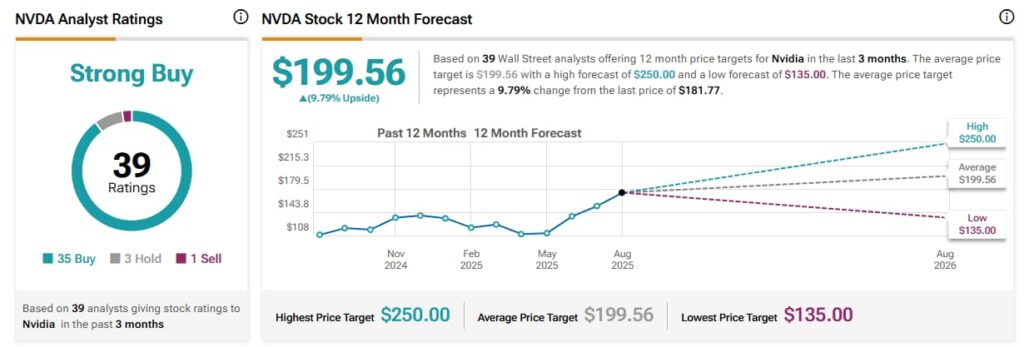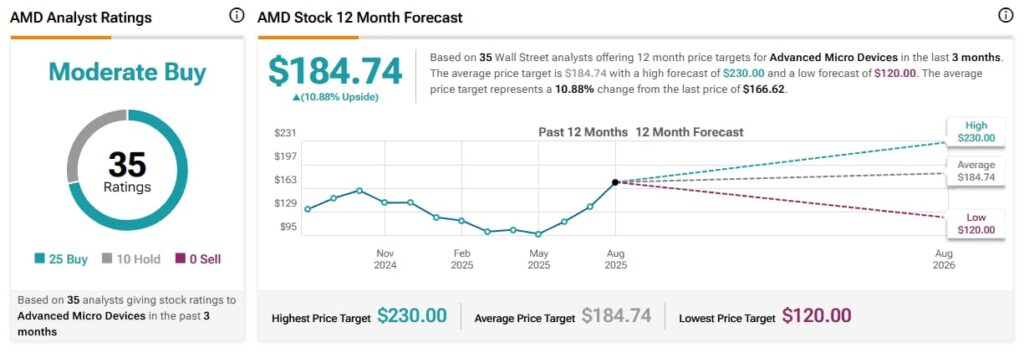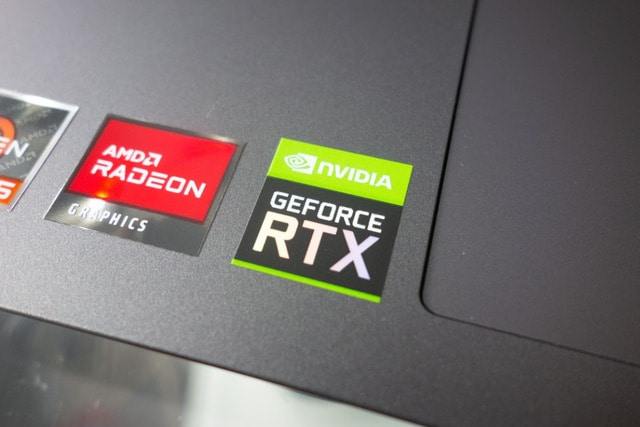The day of Nvidia’s (NASDAQ: NVDA) next quarterly earnings report has arrived, and the market expectations could not be higher.
For weeks now, the chip maker has been in the trade war spotlight, so the numbers will serve as a benchmark for President Trump’s evolving policy in China and broader tariff strategies.
The company, the first ever to break the $4 trillion in market cap, is expected to deliver $46.2 billion in revenue for the quarter, with adjusted earnings per share (EPS) expected to come in at $1.01.
Unsurprisingly, then, Nvidia remains one of Wall Street’s leading sector bets, the average stock price for the next 12 months sitting at $199.56 and implying 9.79% upside potential from the current price levels based on the ratings published on analytics platform TipRanks.

Nvidia target price
Last week, UBS analyst Timothy Arcuri lifted his price target from $175 to $205 while reiterating a “Buy” rating.
The analyst cited robust demand signals across data centers, in particular ~40GW of high-confidence new load requests in Texas and commentary from GB200/GB300 rack partners indicating 30,000 racks could be deployed in 2025.
Further, UBS expects second-quarter revenues at around $46 billion, with third-quarter guidance of as much as $57 billion, China included.
Elaborating on the figures, UBS noted the semiconductor company’s deal with the U.S. government to sell H20 chips in exchange for a 15% revenue share, arguing it could generate a few billion dollars in incremental revenue per quarter.
AMD still in the race
While all eyes are on Nvidia, AMD (NASDAQ: AMD), one of its chief competitors, is also seeing some noteworthy developments.
As argued by Truist analyst William Stein, Nvidia has been the undisputed champion of Compute Unified Device Architecture (CUDA) and software-hardware integration for years, with AMD being little more than a “bargaining chip” in that area.
Now, Stein argued, hyperscale customers are working with AMD as a potential partner rather than simply as a “price check” to Nvidia.
Accordingly, the analyst upgraded his AMD stock rating from “Hold” to “Buy” and raised his price target from $173 to $213, implying a 28% upside.
Currently, the average AMD price for the next 12 months is $187.74 (a 10.88% upside), with the general consensus being “Moderate Buy” according to TipRanks data.

Stein’s optimism is also the result of AMD’s resurgence in server CPUs, as the company grew from less than 1% share a decade ago to roughly 21% today.
Featured image via Shutterstock










